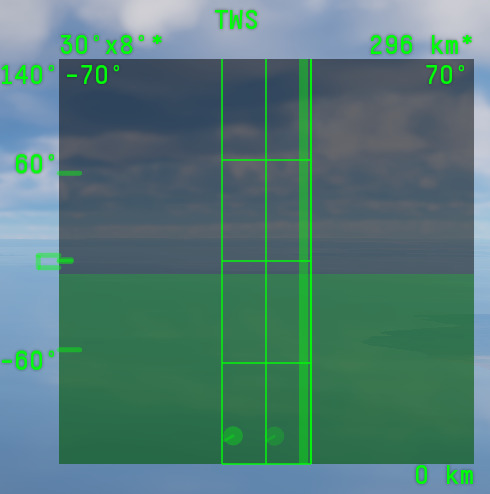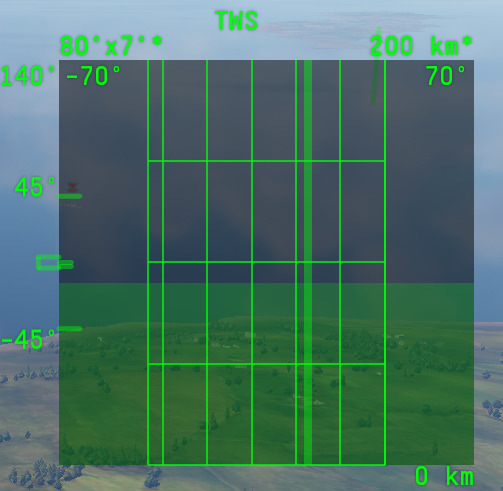t=1987, 33:07
Huh, alright.
I know that the Ibris is technically an upgraded Bars, so I just wanted to check-
But yeah, I guess it is some Bars variant I don’t know of.
i wonder what thread is that, maybe you’ll find me on there lol
it might be the extended scope scale and not the actual range of detection as we see in most fighter who have DL, we know that russian use DL btw flankers and that its might just be around 240-300km.


This one.
Also I just noticed I wrote Special Projects instead of Secret Projects.- oops
That would make more sense lol.
Is it at all possible that Irbis can do ± 40* azimuth instead of solely ± 60*?
I mean yeah ofc. but radar screen always shows 60 degrees. its scan can be smaller than ±60

What is that photo from??- it looks kinda old-
I’m not doubting you, but it just doesn’t make sense to me not to try and standardize radars and engines for the Flankers.- Which is what I thought the SM2 was for like… 2 years.-
Beautiful
The first Su-30SM prototype took flight 12 years ago, piloted by Sergei Kostin and Pavel Malovechko.
If you have followed military developments since the 2000s, you may recall archived reports in the “International Market News” section on Quan Su. Prior to 2012, the name Su-30SM never appeared in Russian military news. Under Serdyukov’s 2009 plan, priorities were 48 Su-35S and 42 Su-34, directly supporting the modernization of the Russian Air Force.
However, by 2012 a new problem emerged: two aircraft models needed immediate replacement—the MiG-29 and the early Su-24 “Puma” variant (the original short-pitot Su-24, not the Su-24M). The plan had been to continue upgrading Su-27P to Su-27SM, and use Su-24M2 and Su-34.
Yet the Su-30SM was designed and developed at lightning speed within just 6 months, and by September it had already completed flight testing. Less than a year later, the 120th Fighter Regiment at Domna received 24 Su-30SM to replace the MiG-29.
Both the Russian Air Force and Russian Naval Aviation received Su-30SMs, but with different roles. As mentioned earlier, the Air Force used the Su-30SM to replace MiG-29s, while Naval Aviation used it to replace the Su-17M4 and Su-24M. Meanwhile, the Su-35S was still undergoing testing and would not be delivered until 2014.
According to Indian public opinion at the time, the Su-30SM was a copy of their Su-30MKI—similar to how China “cloned” the J-11. 🥸
Today Russia needs rapid modernization initiatives—breakthrough solutions like what the Su-30SM program achieved in 2012. This may have been Sergey Shoigu’s first major positive mark shortly after becoming Minister of Defense.
Rafale is a multirole fighter roughly the same weight class as the F/A-18, but its cockpit capabilities are nearly on par with the F-15E Strike Eagle.
Therefore, the Su-30MKM proposed by Russia for Malaysia was essentially a “Rafale with F-15E-equivalent mission capability.” This is the key difference between the Su-30MKI and the MKM/SM variants.
Malaysia fully exploited the Su-30MKM’s capabilities as a true F-15E-class strike fighter, with complete electro-optical systems and accompanying weapons—serving as a response to Singapore’s F-15SG. Later, when developing the Su-30SM, the Russian Air Force selected a configuration nearly identical to the MKM but fully domestically integrated, replacing French subsystems in 2018 on the Su-30SM2.
Previously, Su-30SM procurement contracts were signed jointly for both the Air Force and Naval Aviation, with distribution depending on the Air Force’s discretion. The Su-30SM2 contract, however, was signed directly by Russian Naval Aviation at Army-2020, giving them naming authority.
According to Russian Air Force requirements, modernized Su-30SMs must at minimum be equipped with AL-41S engines. The Su-30SM2 with AL-41S was expected to fly in 2021, later postponed to 2023, then 2025… The Su-30SMs delivered in June 2023 remain “SM2s” by designation only.
After the control system failure of Su-30SM No. 26 of the 31st Fighter Regiment at Millerovo during operations in Syria on April 26, 2018, the Russian Air Force has not ordered additional Su-30SMs. After completing deliveries to three regiments in mid-2019, Russia gradually shifted its main focus to the Su-35S. I source from Redirecting...
this is Vietnamese page and I know that the Jagdgeschwader 12 page has credible sources, but I can’t prove it.
I think that guy either really likes Su-30s or he’s using AI
what is this nonsense.
yeah it reeks of ai
i dont see how you don’t think it’s not an mki copy lol. su-30sm is closer to the mki than it is to the mkm. su-30mkm is actually fairly unique compared to the sm and the mki
i recommend reading this book on the su-30sm
yep I used a.i to translate but the original article was written in Vietnamese
The author’s intention is to mock some Indian sources saying that 30sm is a copy of 30mki.
it is essentially. su-30mki is baseline configuration, and su-30sm is almost identical to it
Ohhhhhhh, that makes sense lol.
I know SM is developed based on MKI but I don’t know if SM is 100% the same or not, only Sukhoi and Russian Ministry of Defense know that SM is different from MKI

